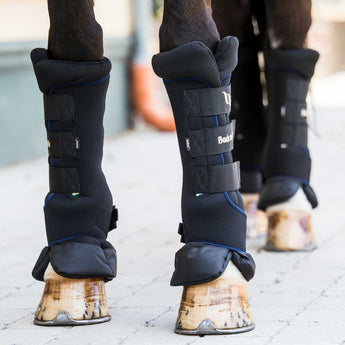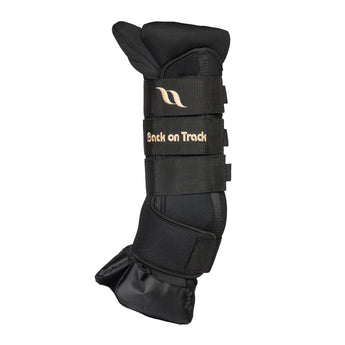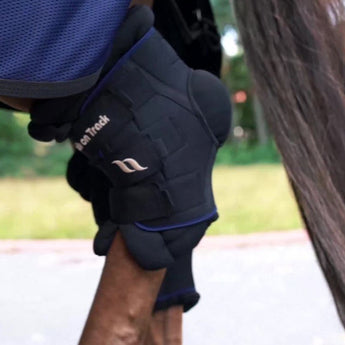Horses and humans have been close companions for centuries. Their steadfast and hardworking nature has made horses an invaluable asset to farmers, pioneers, and manufacturers. Not only are horses extremely reliable, making them a great coworker in various industries, but they are also very loyal and loving. Due to this trustworthy temperament, horses have long been seen as companion animals and are able to provide their riders with emotional support as well as physical aid. This brief overview will explore the connection between horses and humans over the years, the different types of equine-assisted therapy available, and examine how people can benefit from equine-assisted therapy.
History of equine-assisted therapy
Though it has not always held the same name, people have practiced equine-assisted therapy for centuries. Even dating as far back as 400 BC, the ancient Greeks started to understand the many emotional, physical, and mental benefits that horseback riding could bring. During this time, people mainly used equine-assisted therapy to provide physical support to individuals with incurable illnesses. As society moved into modern times, humans began to also recognize the mental benefits of horseback riding. Throughout the 18th and 19th centuries, individuals used horseback riding to treat physical ailments resultant from neurological disorders. In the late 1800s, neurologists began to utilize equine-assisted therapy to help improve the muscle tone, balance, movement, and overall mood of patients with neurological disorders. During the early 1900s, equine-therapy also helped rehabilitate soldiers who became wounded in the war.
Following the accomplishments of horsewoman Lis Hartel at the 1952 Olympic Games, scientists and medical professionals began to truly take notice of the possibilities of equine-assisted therapy. Hartel, who had suffered from polio as a young adult, had turned to horseback riding as a means of strengthening her lower leg muscles which the disease left paralyzed. Thanks to her practice of equine-assisted therapy, Hartel went on to become one of the first women to compete in Olympic dressage and won multiple medals in the sport. Soon after, equine-assisted therapy programs became increasingly popular around the world. In 1969, founders established The British Riding for the Disabled Association (RDA) and the North American Riding for the Handicapped Association (NARHA). They sought to provide individuals with therapeutic services that would enable them to learn valuable fitness and life skills.
Benefits of equine-assisted therapy
Equine-assisted therapy is a successful treatment program for individuals with a wide variety of disorders. Below are a few examples of how people can benefit from equine-assisted therapy—whether it be mentally, physically, or emotionally.
Physical benefits
People use equine-assisted therapy in the same respect as other forms of physical therapy. The main goal of equine-assisted therapy for individuals with physical disabilities is to increase bodily awareness and function of certain muscle groups. Horseback riding can help strengthen back, buttocks, abdomen, and leg muscles. It’s also particularly helpful in gaining spinal strength. As such, equine-assisted therapy frequently assists individuals with paralysis or cerebral palsy. While working to remain upright in the saddle, the rider gains balance and strength that will enable them to perform other daily activities with increased ease. Further, some riders may not possess the spinal or muscle strength to remain upright in the saddle on their own. As such, one must take extra precautionary measures to ensure the safety of the horse and rider. For instance, the rider will always wear an equine riding helmet and may sit in an adapted saddle based on their physical abilities. Sometimes, therapists may use older horses in equine-assisted therapy sessions as they are more predictable and patient with their riders.
Mental benefits
Equine-assisted therapy is also a beneficial therapy option for individuals with developmental disorders. Frequently, individuals with Down syndrome, on the autism spectrum, or with genetic disorders that cause developmental delays will practice this form of therapy. When participating in equine-assisted therapy, the rider must remain focused and aware of their surroundings. By doing so, the rider can better control themselves and the horse and develop important problem-solving skills that they can use in other facets of life. Horses are also highly sensitive to movement and direction, allowing the rider to exercise complete control over the situation and learn independence at the same time. The ability of horses to respond promptly to the directions of their rider allows the rider to see immediate cause and effect for their decisions. As such, the rider can take complete control of the situation.
Emotional benefits
On some occasions, equine-assisted therapy can help individuals with behavioral disorders or those suffering from emotional distress. Horses are very loyal and trustworthy animals. They are also highly social animals who can form very strong bonds with their riders. Interacting with and caring for such a large animal can be very beneficial for individuals who experienced emotional trauma. Unlike human therapists, horses are always completely unbiased and non-judgmental. As such, participants in equine-assisted therapy often find themselves more comfortable sharing their thoughts and feelings with their equine assistant than they might with a human therapist. Individuals suffering from addiction and PTSD have reaped the emotional benefits of equine-assisted therapy.
Types of equine-assisted therapy
Therapeutic horseback riding
Therapeutic horseback riding mainly helps riders strengthen muscles in a more relaxed setting than other forms of physical therapy. Professionals also frequently use it to improve an individual’s sensory and motor skills. You can easily adapt therapeutic horseback riding sessions to each individual rider to ensure it benefits each individuals’ physical, emotional, and developmental disorders.
Hippotherapy
Don’t let the name confuse you. Hippotherapy is indeed a form of equine-assisted therapy and a rather popular one at that. Hippotherapy can help riders develop their verbal abilities, as they must rely on verbal cues to direct the horse and to speak with the assisting therapist. Unlike therapeutic horseback riding sessions, which a non-therapist riding instructor will assist in, a licensed physical or occupational therapist or a speech and language pathologist will facilitate hippotherapy sessions.
Equine-assisted learning
Equine-assisted learning, which some refer to as equine-facilitated learning or abbreviate as EAL, mainly focuses on education and personal and professional development. This form of equine-assisted therapy teaches individuals how to work with and build a relationship with a horse which, in turn, allows them to improve their self-confidence and self-esteem. Equine-assisted learning also encourages the development of important verbal and non-verbal communication skills, as well as basic horsemanship skills.













